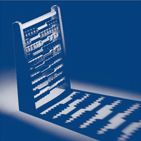Next month, those of us who are still self-employed will be digging deep to pay our second payment on account for the tax year 2017-18. The deadline to avoid late payment interest and penalties is 31 July 2018.
For most of us, these payments on account (January and July 2018) for 2017-18 are based on agreed self-assessment liability for 2016-17. Which begs the questions, what if your liability for 2017-18 is more or less than 2016-17?
The quick reply is fairly obvious, you will be over or underpaying tax in January and July 2018 dependent on your taxable income in both years.
As the major income source for most self-assessment persons is profits from self-employment, now is a good time to take a close look at your draft accounts assessed in 2017-18, for the majority of tax payers affected this will be for the accounting year ended 31 March 2018.
If your profits have fallen
If draft accounts demonstrate a fall in profits 2017-18, compared to the previous year, then you may have grounds to reduce your payments on account January and July 2018. As you have already paid the January instalment (based on previous year estimates) now you have evidence that income is falling, you can lodge an application with HMRC to reduce payments on account and your July payment may be reduced, and perhaps significantly.
Time to crunch the numbers, and we can help you estimate liabilities and lodge your application accordingly. In this way you may not have to dig too deep after all.
If your profits have increased
If you have increased your income for 2017-18, your payments on account January and July 2018 may not cover your actual liability for the year.
Fear not, you do not need to increase your payments on account, but it is well worth gathering your papers and completing your accounts, so your advisor can prepare your tax return for 2017-18 and quantify the amount of the underpayment. This will be payable, together with your first payment on account for 2018-19 on or before 31 January 2019.



